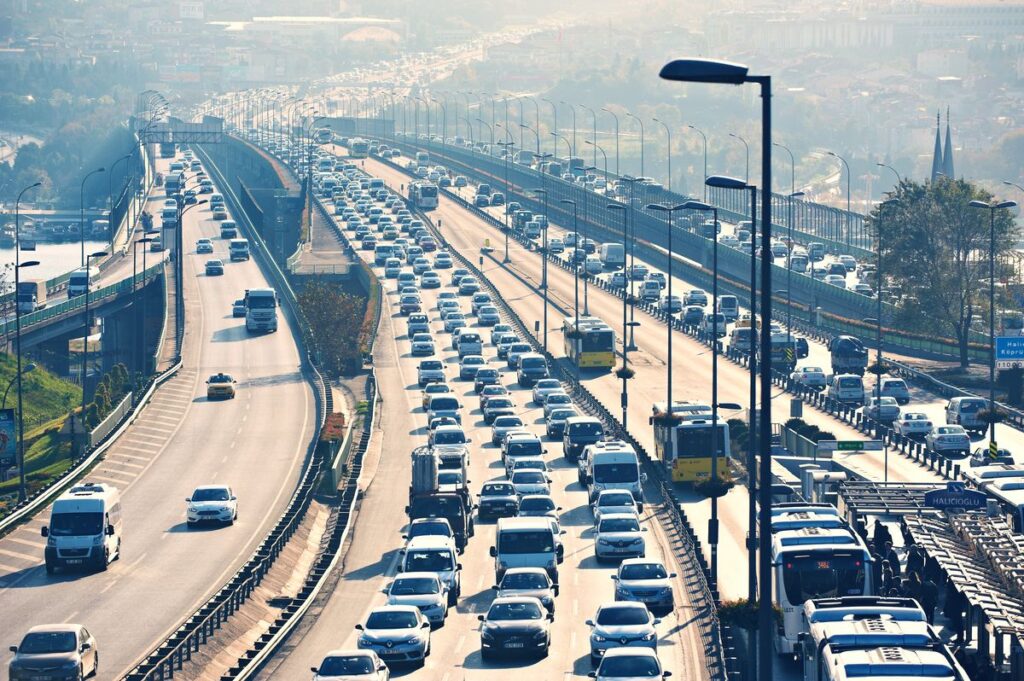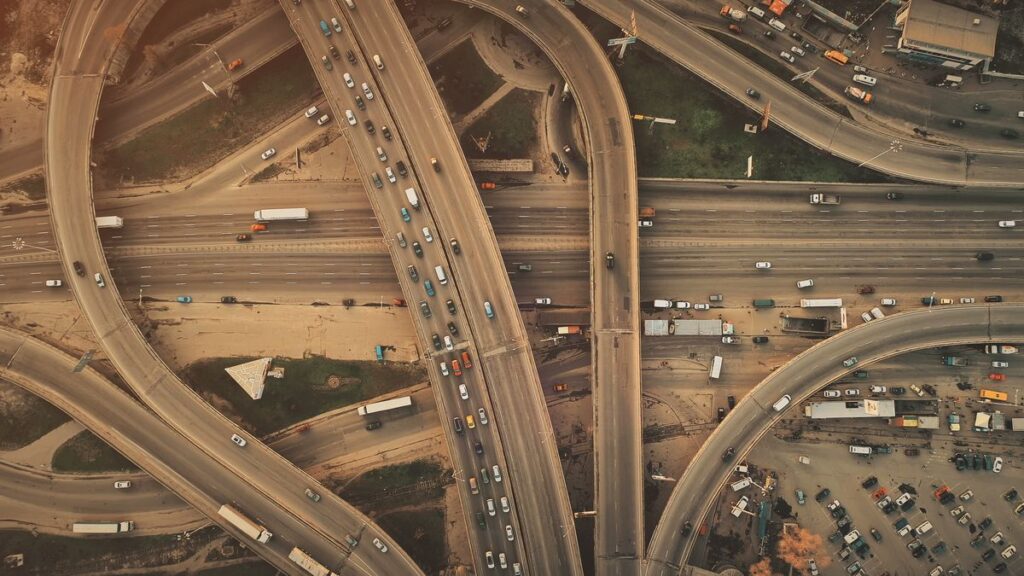Multi-vehicle accidents, often referred to as pile-ups, are among the most complex collision cases on Georgia roads. Determining liability in these accidents involves navigating a web of details, laws, and often, multiple parties. This comprehensive guide aims to shed light on how liability is determined in multi-vehicle accidents in Georgia, offering crucial insights for anyone involved in such unfortunate incidents.
The Complexity of Multi-Vehicle Accidents
In Georgia, as in many states, multi-vehicle accidents can occur due to a variety of reasons, including inclement weather, high-speed collisions, and chain reactions. These accidents often result in significant property damage, severe injuries, or even fatalities, making the determination of liability a critical and complex process.
Varied Causes and Unpredictable Outcomes
The complexity of multi-vehicle accidents in Georgia is often heightened by the varied and unpredictable nature of these incidents. Factors such as sudden traffic slowdowns, distracted driving, and mechanical failures can all contribute to the chaos of these accidents. The unpredictable nature of each driver’s reaction to an unfolding accident further complicates matters. One driver might swerve to avoid a collision, inadvertently causing another accident, while another might stop too abruptly, leading to a rear-end collision.
The Domino Effect in Accidents
Multi-vehicle accidents often exhibit a domino effect, where one collision leads to another, creating a chain of events that can involve numerous vehicles. This domino effect makes it challenging to pinpoint the initial cause of the accident and, therefore, who is primarily at fault. Each subsequent collision adds a layer of complexity to the accident investigation, as investigators must piece together multiple events and determine the role of each driver.
The Role of Environmental and Road Conditions
In Georgia, environmental factors like fog, heavy rain, or icy roads can significantly contribute to multi-vehicle accidents. Poor visibility or slippery roads can make it difficult for drivers to see hazards or stop in time, leading to collisions. Additionally, the design and condition of the road itself can be a contributing factor. Roads with poor lighting, lack of proper signage, or inadequate maintenance can increase the risk of multi-vehicle accidents.
The Impact of High Traffic Density
Georgia’s high-traffic areas, particularly in and around cities like Atlanta, naturally have a higher incidence of multi-vehicle accidents. High traffic density increases the likelihood of accidents due to the close proximity of vehicles and the increased potential for sudden stops and starts. In these high-density areas, even a minor collision can quickly escalate into a multi-vehicle accident.

Georgia’s Comparative Fault System
Georgia operates under a modified comparative fault system. This means that each party involved in an accident can be held liable for their percentage of fault. However, if a party is found to be 50% or more at fault, they are barred from recovering damages. In the context of multi-vehicle accidents, this system requires a detailed analysis to determine the degree of fault of each driver involved.
Investigating a Multi-Vehicle Accident
Gathering Evidence
The investigation of a multi-vehicle accident typically involves collecting various forms of evidence:
- Police Reports: The responding officer’s report is a crucial piece of evidence. It contains details about the accident, including potential causes and contributing factors.
- Eyewitness Testimonies: Statements from witnesses can provide valuable perspectives on the accident.
- Traffic Camera Footage: If available, this can offer a clear view of how the accident unfolded.
- Vehicle Damage: The extent and location of damage on each vehicle can help reconstruct the accident.
- Expert Analysis: Accident reconstruction experts can be invaluable in understanding the dynamics of the crash.
Understanding the Role of Negligence
In Georgia, negligence plays a central role in determining liability. A driver is considered negligent if they failed to exercise reasonable care, leading to the accident. In multi-vehicle accidents, one or more drivers can be found negligent. For instance, a driver who was texting and triggered a rear-end collision that led to a pile-up would likely bear significant fault.
Common Scenarios in Multi-Vehicle Accidents
Rear-End Collisions
In Georgia, the driver who rear-ends another vehicle is often found at fault. However, in a multi-vehicle pile-up, subsequent impacts might complicate liability. For example, if a third vehicle rear-ends the second, causing it to hit the first again, both the third and the first drivers might share liability.
Chain Reaction Accidents
Chain reaction accidents occur when multiple vehicles are involved in a series of collisions. Determining who is at fault requires understanding the sequence of impacts and the actions of each driver before the collision.
Intersection Accidents
Intersections are common sites for multi-vehicle accidents. Liability may depend on traffic signals, right-of-way laws, and the actions of each driver at the intersection.
Highway Accidents
Highways in Georgia, with their high speeds and heavy traffic, are frequent sites for multi-vehicle accidents. These accidents often occur due to sudden stops, speed variations, or drivers not maintaining a safe following distance. In such scenarios, multiple drivers may share liability. For instance, a driver who fails to stop in time, causing a rear-end collision that triggers a series of crashes, may be primarily at fault. However, if another driver was speeding or changing lanes erratically, they may also bear partial responsibility.
Inclement Weather Conditions
Georgia’s weather conditions, such as heavy rain, fog, or ice, can lead to multi-vehicle accidents. Poor visibility and slippery roads often contribute to these crashes. In these cases, determining liability can be complex. While one driver might initiate the accident, others may be found liable if they were driving recklessly for the conditions, such as not reducing speed in heavy rain or fog.
Merging and Lane Change Accidents
Accidents during merging on highways or lane changes in urban settings are common in Georgia. These accidents can quickly involve multiple vehicles, especially in high-traffic areas. Liability may depend on whether drivers were following lane-changing rules, using turn signals, and checking blind spots. For example, if a driver merges into a lane without noticing an approaching vehicle, causing that vehicle to swerve and collide with others, the merging driver may be found at fault.
Accidents Involving Commercial Vehicles
In Georgia, accidents involving commercial vehicles like trucks or buses can often lead to multi-vehicle pile-ups due to their size and weight. Determining liability in these cases can be particularly challenging. It may involve not only the driver’s actions but also the commercial vehicle company’s maintenance records, the driver’s work hours, and vehicle load compliance.
Accidents in Construction Zones
Construction zones in Georgia can be hazardous for drivers, often leading to multi-vehicle accidents. Liability in these cases can extend beyond the drivers to include construction companies or government entities. For instance, if inadequate signage or poor road conditions in a construction zone contribute to a multi-vehicle accident, the entity responsible for the zone may also be liable.

Dealing with Insurance Companies
In Georgia, dealing with multiple insurance companies can be a challenging aspect of multi-vehicle accidents. Each driver’s insurance company will likely conduct its own investigation to minimize their policyholder’s liability. It’s crucial to communicate carefully with insurance adjusters and consider seeking legal advice before making any statements or accepting settlements.
Legal Representation and Settlement Negotiations
Given the complexities involved, seeking legal representation is often advisable in multi-vehicle accident cases in Georgia. An experienced personal injury attorney at Rebecca Kay Sapp Law Firm can:
- Navigate the state’s comparative fault laws.
- Handle communications and negotiations with multiple insurance companies.
- Advocate for your best interests, whether in settlement negotiations or in court.
Calculating Damages
In multi-vehicle accidents, damages can include medical expenses, lost wages, property damage, and pain and suffering. Calculating these damages in Georgia involves considering the costs incurred and the impact on the victim’s life, especially in cases of severe injury or disability.
Tips for Drivers Involved in Multi-Vehicle Accidents
- Remain at the Scene: Leaving the scene of an accident can result in legal penalties.
- Ensure Safety: If possible, move to a safe area to avoid further collisions.
- Call the Police: A police report is essential for insurance and legal purposes.
- Seek Medical Attention: Even if injuries are not immediately apparent, it’s important to get checked.
- Document the Scene: Take photos and notes of the accident scene, including vehicle positions and damages.
- Exchange Information: Collect contact and insurance information from all parties involved.
- Avoid Admitting Fault: Do not make statements about fault at the scene; leave this to the investigation.
- Report the Accident to Your Insurance: Inform your insurance company about the accident as soon as possible.
Conclusion
Navigating liability in multi-vehicle accidents in Georgia requires a thorough understanding of state laws, diligent investigation, and often, professional legal assistance from a car accident attorney at Rebecca Kay Sapp Law Firm. These accidents can be overwhelming, but understanding your rights and responsibilities can significantly ease the process. Remember, safety should always be your first priority, both in preventing accidents and in dealing with their aftermath. By being informed and prepared, you can navigate the complexities of multi-vehicle accidents with greater confidence and clarity.

